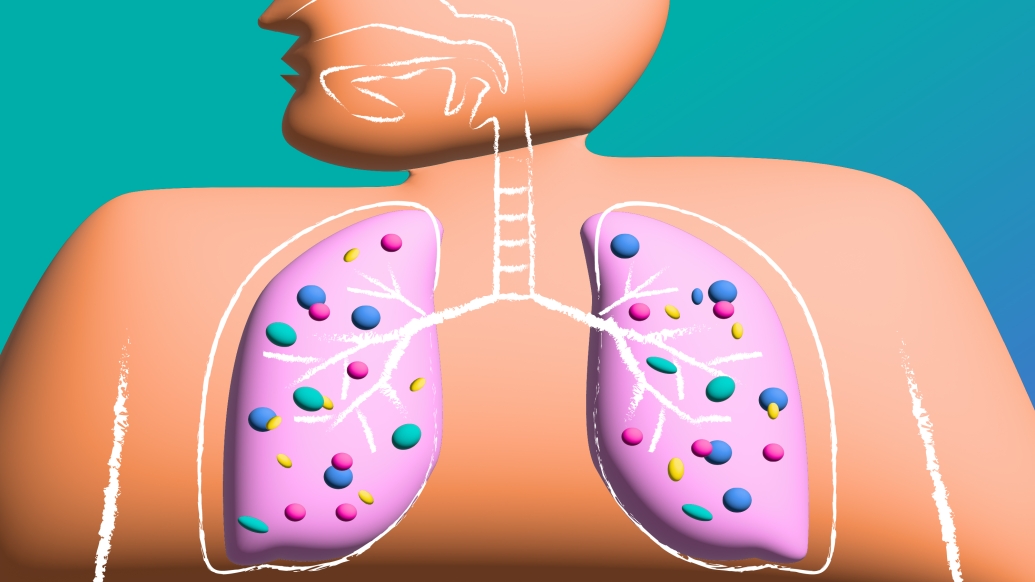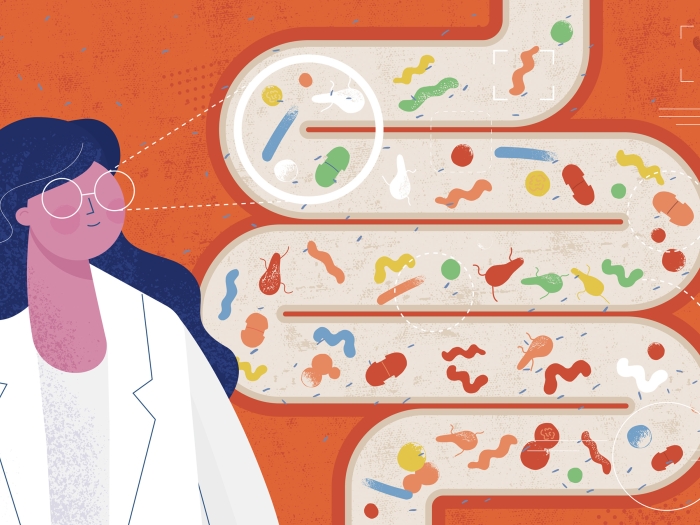Variances in the population of microbes may be behind higher risk of asthma
5:02 AM
Author |

Like many chronic health conditions, asthma—a disease in which the airways become inflamed and narrowed, leading to difficulty breathing-- develops from a complex interplay of environmental, systemic and individual factors.
Researchers are trying to tease apart these factors in the hopes of reducing the burden of this life-altering disease. Some people are at higher risk of developing asthma, including those with a family history, people who have severe respiratory infections in childhood, or who are exposed to chronic air pollution. People with obesity are also at a greater risk for developing asthma often have a much harder time finding effective relief.
MORE FROM MICHIGAN: Sign up for our weekly newsletter
A study, led by Ariangela Kozik, Ph.D., Yvonne Huang, M.D., and their team, explores the unrecognized role of the lung microbiome in asthma, with potential implications for our understanding of obesity. “Asthma is not a monolith,” said Kozik. “My focus was on understanding asthma phenotypes--what are the different types of asthma that can manifest and how is the airway microbiome involved.”
Until recently, scientists did not appreciate that the lungs contained their own population of bacteria, fungi and viruses, each microorganism interacting with the human body’s systems, both in sickness and in health.
To investigate whether there are microbiome differences between people who have asthma and people who do not and people who have obesity and those who do not, the team examined sputum from 61 participants, 44 of whom had asthma.
They extracted genetic material from the samples to identify which microorganisms were present in the airway and found that the bacteria present in the sputum from people with obesity differed from bacteria present in people without obesity. In particular, they found more abundant Prevotella, Gemella, and Streptococcus bacteria in people with obesity, echoing findings from previous studies.
Furthermore, since both asthma and obesity result in inflammation, the team examined, using network analysis, the presence of immune modulators known as cytokines, proteins that turn off and on the inflammatory response. They found notable differences in cytokine-cytokine interactions in people with and without obesity and without and in people with and without asthma.
In people with both asthma and obesity, a blood adipokine (a cytokine released by fat cells) called PAI-1, was associated with the inflammatory markers, GM-CSF and IL-1Beta, among others, measured in the blood and the sputum. PAI-1 in the airway has previously been associated with inflammation and tissue changes, the team noted.
They also found a positive association between the cytokine IL-10 and the amount of bacterial diversity in the sputum samples. IL-10 suppresses inflammatory cytokines.
“We know microbes can stimulate and are sensitive to cytokines and we know the immune system is also. My thinking is that cytokine signaling may be an important link between the airway microbiome and the immune system, especially in chronic respiratory diseases,” said Kozik. “What the data seem to be showing is the microbial/immune relationship seems to differ in people who have obesity and people who don’t, and that seemed to be the case in the people who had asthma and the people who didn’t.”
Kozik notes that the paper provides several directions for future research including how the signals between the lungs’ microbiome and the immune system are altered in the presence of obesity, the mechanism behind those changes, how that interaction might affect how people respond to available therapies and whether a greater understanding of the relationship between the lung microbiome and the human immune system might inform better asthma treatments.
Additional authors include Lesa A. Begley, MS, Njira Lugogo, MD, Alan Baptist, MD, MPH, John Erb-Downward, PhD, and Kristopher Opron, PhD.
Paper cited: “Airway microbiota and immune mediator relationships differ in obesity and asthma,” Journal of Allergy and Clinical Immunology. DOI: 10.1016/j.jaci.2022.11.024
Live your healthiest life: Get tips from top experts weekly
Headlines from the frontlines: The power of scientific discovery harnessed and delivered to your inbox every week
Like Podcasts? Add the Michigan Medicine News Break on Spotify, Apple Podcasts or anywhere you listen to podcasts.

Explore a variety of healthcare news & stories by visiting the Health Lab home page for more articles.

Department of Communication at Michigan Medicine
Want top health & research news weekly? Sign up for Health Lab’s newsletters today!





